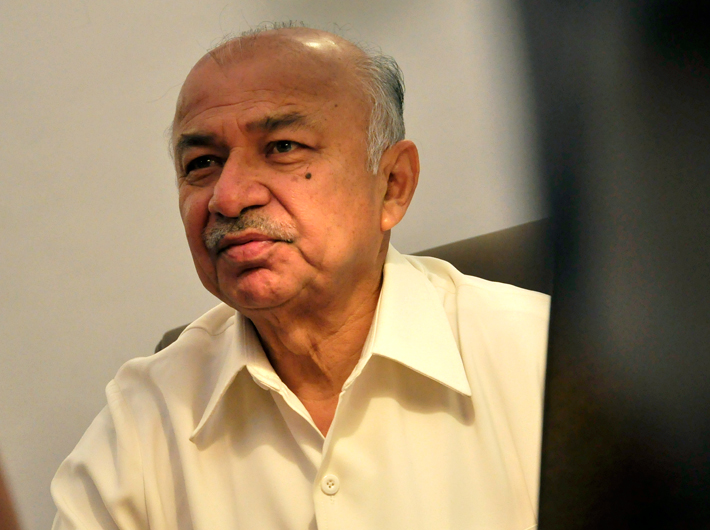Union finance minister Pranab Mukherjee had rare words of praise for his cabinet colleague when he extolled power minister Sushilkumar Shinde for the highest capacity addition of 10,462 MW between April 2010 and February 2011. In an interview with Sweta Ranjan, Shinde discusses how he plans to deliver “power to all” by next year. Edited excerpts:
What is the latest on capacity addition?
The installed generation capacity as on March 31, 2011 was 1,73,126 MW whereas it was 1,23,901 MW by the end of March 2006. That means, there has been a capacity addition of about 49,225 MW with a growth of 40 percent. In the 8th, 9th and 10th plans together, the capacity addition was 56,618 MW whereas in the 11th plan the target is a capacity addition of 78,700 MW (this does not include 12,000 MW captive power and 14,000 MW renewable power). This has been revised to 62,374 MW in the mid-term appraisal of the 11th plan. During 2010-2011, 15,795 MW of capacity has been synchronised.
How do you plan to achieve this target and what monitoring mechanism is your ministry following?
I went into the details of where we had failed and found there were a few reasons. We had fixed the target at 42,000 MW but orders were placed only for 21,000 MW. I enquired how this had happened and realised that BHEL had no capacity. That means, even though target had been scaled up BHEL did not have enough capacity. So, we decided to correct this. The other reason was that the orders were not placed in time, so we started to place the orders on time. The third reason was the lack of proper monitoring; only the central electricity authority was monitoring. Today, we have a group of five units and they go to the private units as well as corporation units. The second level is the central electricity authority. At the third level, all things are being looked into by the secretary. Then, at the last level, I monitor it every month. At my level, there is an advisory group of eight retired secretaries of the power department and a member from FICCI, a member from CII and BHEL is there. This was corrected. We invited a lot of joint sector factories because there were lots of complaints about the limited capacity of BHEL. So, we concentrated on having more factories like this in India. A group of ministers (GoM) was appointed and we pleaded there that we needed to have more factories in India, which was finally allowed. Apart from BHEL, six more companies are coming.
Why have we been missing the targets for capacity addition for so long?
There are problems of environment, there are problems of fuel, there are problems of strikes and so on. So, when we considered at the midterm we revised the target from 78,000 MW to 62,000 MW. This is the position of the 11th plan. Over five years, we have added 50,000 MW. No reasonable person will fix a higher target considering all the problems but we ourselves have fixed a target of 1,00,000 MW in the 12th plan. So we have raised the target for capacity addition despite all challenges. At present, 79,000 MW is under construction. With all our preparedness, I am quite sure we will be able to do 62,000 in the 11th plan.
Among the major hurdles in capacity addition that you have mentioned is the timely clearance from the environment ministry and getting land for the project. Do these problems still persist?
Yes, that is why the group of ministers has been appointed. There was a project on Ganga Lohari-Nagpala which was going to add 600 MW.
Because of the agitation by fundamentalists we had to stop it. It is below Tehri. Tehri is not affected by Ganga but we did not want to take any risk. This is just one such project; there are many other projects pending.
The ultra-mega power project in Orissa has got clearance from the environment ministry but the state government has said it will not support the 4,000 MW project at Bedabahal in Sundergarh district if the power projects of NTPC and the expansion project of IB thermal power station are not saved.
I was told it is being cleared, but for that also there are some problems and we have taken it up to the GoM.
You have said that India will generate 1,000 MW solar power by 2013. What are you planning to boost the solar industry?
We have given 100 MW of NTPC power to be mixed with the solar power so that its cost comes down from Rs 18 per unit to Rs 5 per unit.
How is the Restructured Accelerated Power Development and Reforms Programme (R- APDRP) progressing?
We have almost completed the first part, which involves setting up the IT database. R-APDRP has been launched to reduce AT&C (aggregate technical and commercial) losses in distribution sector with an estimated cost of Rs 51,577 crore. As many as 1,401 projects worth Rs 5,846.10 crore for 29 States/UTs have already been approved under Part A and under Part B 823 projects worth Rs 15,974.59 crore for 14 States have been sanctioned. In addition, Rs 3,902.85 crore has been released to PFC for distribution among the utilities. The objective is to reduce AT&C losses to 15% in project areas through adoption of IT for energy accounting and auditing and strengthening and upgradation of distribution networks.
Are you finding it difficult to get private partnership in distribution of power? Has the government formulated any plan for providing financial incentives for engaging private companies in this sector?
So far, there has not been much response. There are two-three companies; we have started in Bhiwandi, Agra and Kanpur. These are in addition to the ones in Mumbai and Kolkata. For transmission lines also, there are three-four companies which have participated in bidding for projects.
What is the update on the controversy over Chatra project in Jharkhand. The coal ministry has been pressing for relocation of the project arguing that the proposed site is situated above an estimated six billion tonne of coal reserves?
They said they will bring it to the cabinet. I am waiting for it. I tried my level best, but what I can do? From 2000 MW, we have reduced the capacity to 1,000 MW, so they should not complain now.
What has been the progress on the Rajiv Gandhi Grameen Vidyutikaran Yojana (RGGVY)?
Under RGGVY, 96,562 un-electrified villages were electrified by mid-March and 1,89,589 villages were intensively electrified. Free electricity connections have been provided to 159.80 lakh BPL households benefiting more than 7 crore people; 1,10,790 villages were covered under franchisee development in 16 states; 573 projects with an estimated outlay of Rs 32,329.75 crore have been sanctioned; and a total capital subsidy of Rs 23,285.09 crore has been released by the government.

